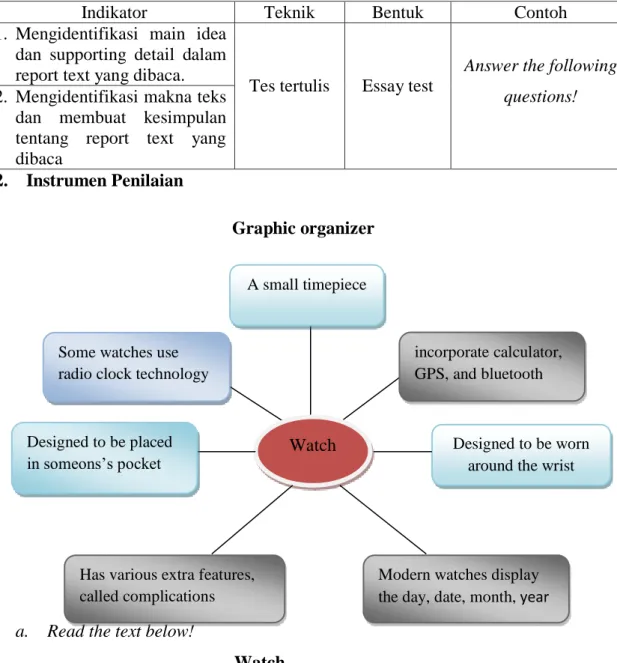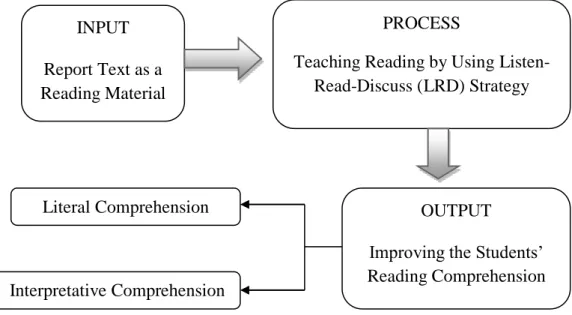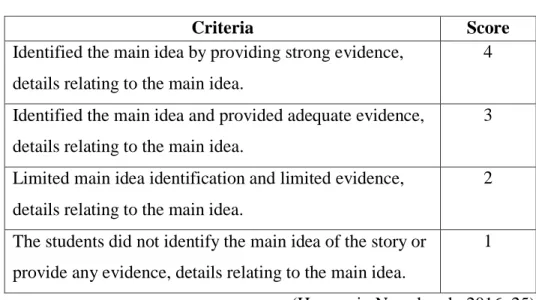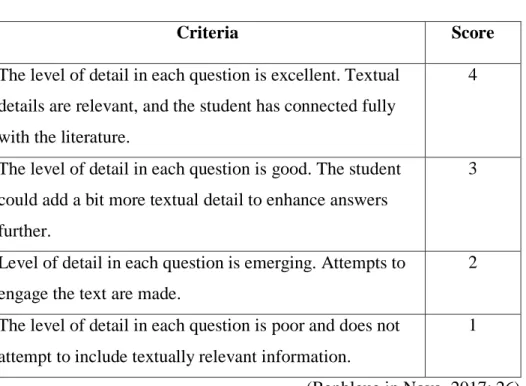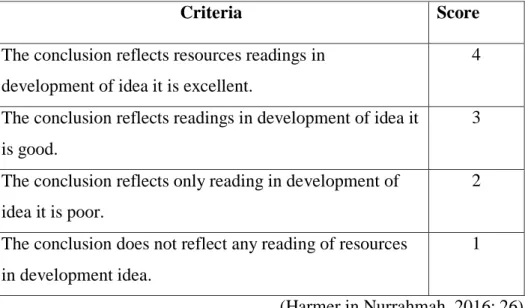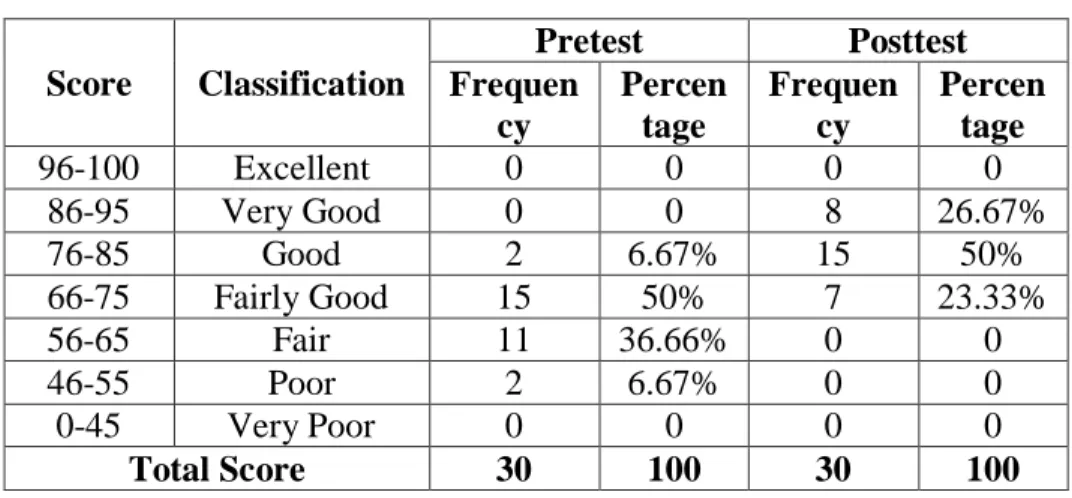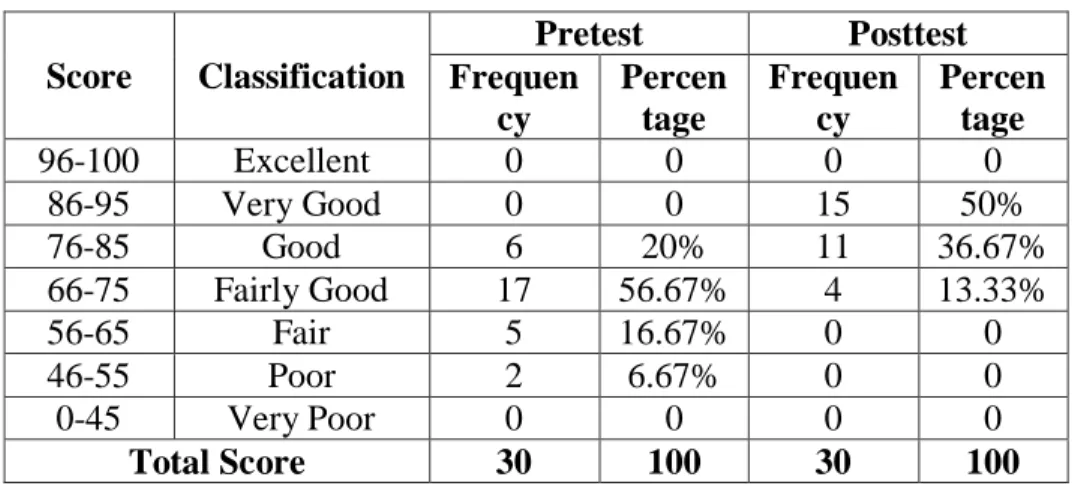Judul Skripsi: Using LRD (Listen-Read-Discuss) Strategy in Improving Students' Reading Comprehension (Pre-Experimental Research on Eleventh Grade Students of SMAN 3 Bulukumba). Judul Skripsi: The use of LRD (Listen-Red-Discuss) strategy in improving students' reading comprehension (A pre-experimental research on eleventh grade students of SMAN 3 Bulukumba). Based on the analysis of the results, the researcher concluded that using the LRD (Listen-Read-Discuss) strategy can improve students' reading comprehension in the literal and interpretive sense.
To know if the use of LRD (Listen-Read-Discuss) strategy improves students' literal comprehension in reading in Eleventh Grade Students of SMAN 3 Bulukumba. To know if the use of LRD (Listen-Read-Discuss) strategy improves students' interpretive comprehension in reading at Eleventh Grade Students of SMAN 3 Bulukumba. This research is limited to the application of LRD (Listen-Read-Discuss) strategy to overcome students' reading comprehension.
INTRODUCTION
- Research Problem
- Research Objective
- Significance of the Research
- Scope of the Research
Report,‖ the Concise Oxford Dictionary 10th Edition, is defined as 1) an account is given of a matter after investigation or consideration. In this case, the researcher calculated the average score and rate percentage of the students' score. a) The average score of students in reading comprehension. It aimed to know the students' improvement in reading, especially literal comprehension. a) The students' average score in literal comprehension.
This section described the average score and rate percentage of the students' pre-test and post-test in a particularly literal sense. a) The students' average score in interpretive comprehension The students' interpretive reading comprehension was obtained from pre-test and post-test. This indicated that the students' average score in pre-test and post-test in terms of interpretive understanding was improved. The result of the data in the previous section showed that 2 (6.67%) students were classified as poor students, fair students were classified as fairly good, 6 (20%) students were classified as good, and none of the students had very poor, very good and excellent in pretest. While the data in post-test result showed that students classified as fairly good students were classified as good, 15 (50%) students were classified as very good, and none of the students had very poor, poor, fair and excellent in this test. The data showed that most students in the pre-test were classified as fairly good, while in the post-test most students were classified as very good.
REVIEW RELATED LITERATURE
Pertinent Ideas of LRD Strategy
This means that this strategy improves the students' prior knowledge before reading and becomes a strategy that guides students to be an active student in learning. Here the students not only increase their understanding through reading as in traditional teaching, but are trained to listen to the teacher's presentation before reading and then discuss it. The teacher should let the students know that the purpose of reading is to experience a different explanation of the text and to compare it with the information they have just heard.
Based on the explanation about LRD strategy, the researcher concludes that LRD (Listen-Read-Discuss) Strategy is one of the strategies that are appropriate to teach the students and can help them to increase their understanding because this is necessary to make students active in reading. In addition to that, the students who have no prior knowledge when the teacher gives a brief explanation of the topic, so this is helpful to build their background knowledge. In this strategy, students will be motivated and attracted to get the meaning of reading.
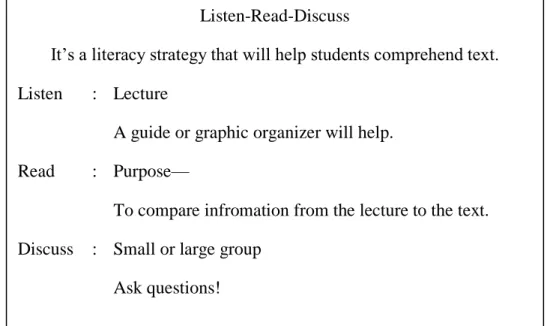
Concept of Reading
According to the above explanation, we can conclude that reading is a skill that first recognizes the words and then finds out the information and meaning of the text. Remember the main ideas and some details that explain the main and supporting ideas in the text. Reading comprehension is a multicomponent, highly complex process that involves many interactions between readers and what they bring to the text (prior knowledge, strategy use) and variables related to the text itself (interest in the text, comprehension of text types).
Therefore, reading comprehension is necessary to obtain meaning by determining what the author means in the text and comparing it to the reader's interpretation of what is implied in the text. Questions of this kind could often be answered in the words of the text itself. These are questions that require students to take literal information from different parts of the text and put it together or reinterpret the information.
Report Text
Evaluation questions involve students in making a considered judgment about the text about what the writer is trying to do and how far he has achieved it. For example, the honesty or bias of the writer (for example in newspaper reporting or advertising copy). e) Personal response question. Students are not asked to evaluate the techniques by which the writer influences, but simply to record his reaction to the text's devices.
Thus, it can be concluded that in language vision, a report text is used to provide information about an event or situation that is filled with facts. According to Buscesment, quoted in Dian Pariska (2015), the indicators of the report text are: the students can identify the detailed information of the text, explain the main idea of the report text, explain the meaning and reference of the word in the report text, and ask the students can close the topic. In addition, the social function of report text is to present information about something in general to the reader.
Conceptual Framework
The last meeting the researcher gives a post-test to know students' improvement after the implementation of the treatment. Literal comprehension is assumed to be the most simple or basic comprehension skill and one that requires little thought and reasoning. Whereas interpretive understanding is the process of inferring ideas that are implied rather than directly stated.
Hypothesis of the Research
Variables and Indicators
In this study, the literal understanding includes the main idea and supporting details, while the interpretive understanding includes the conclusion.
Population and Sample
Research Instrument
Procedure of Collecting Data
Technique of Data Analysis
To get the final result, the researcher calculated the mean score of the students' pretest and posttest by using SPSS 20. The data indicated that the mean score of the students' reading comprehension in the pretest and posttest was significantly different. In this section, the researcher has calculated and obtained the students' . average score and rate percentage in literal reading comprehension.
To support the average score in the previous section, the researcher also calculated the nominal frequency and percentage of students' literal understanding in the pretest and posttest. Table 4.6 shows the students' classification, frequency and percentage in the pretest and posttest, especially interpretation comprehension. The result of the data analysis in the previous section showed that the students' frequency and rate percentage in the pretest and posttest were different.
This was also proven by the average score of the students in the pretest and posttest in reading comprehension, where the total number of students was 30. This meant that the average score of the student's reading comprehension in the pretest and posttest improved. The data showed that the mean score of the students in the literal understanding of the concept improved well with the use of the LRD (Listen-Read-Discuss) strategy.
This was also supported by the students' classification result in pre-test and post-test in particular interpretive understanding. This meant that the students' post-test mean score in interpretive understanding was higher than pre-test.
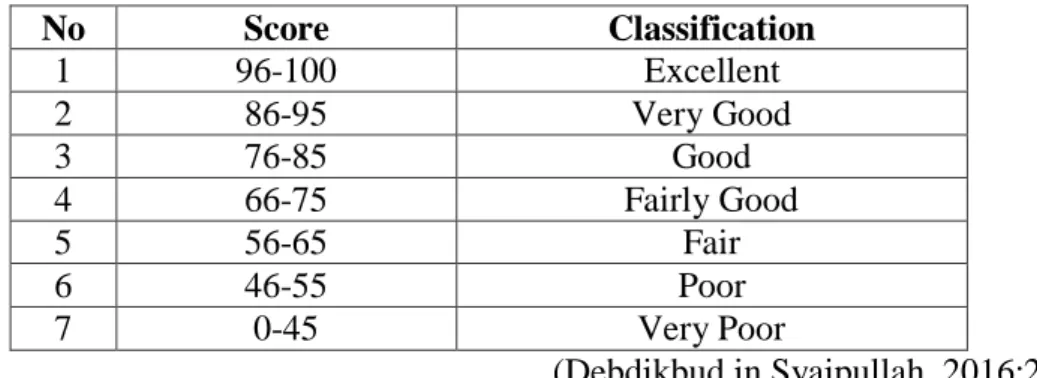
FINDINGS AND DISCUSSION
Discussion
The data showed that the students' pretest was classified as fairly good because most students scored fairly well. Based on the finding, the students' literal understanding in terms of main idea and supporting detail was improved. The previous section also showed that the students' interpretive understanding in term completion was very low in the pre-test.
In addition, the result of the student's reading comprehension, which combines literal and interpretive comprehension, showed that the use of the listen-read-discuss strategy had a good effect. Therefore, the researcher hypothesized that the LRD (Listen-Read-Discuss) strategy could improve students' reading comprehension. After conducting the research, the researcher found that using the LRD (Listen-Read-Discuss) strategy could improve students' reading comprehension.
The effect of using the listen-read-discuss (LRD) strategy and the student's prior knowledge on the student's reading comprehension of second-year students at the Ma. The students were given a pre-test at the first meeting before the treatment.
CONCLUSION AND SUGGESTION
Suggestion
The effect of using LRD (listen, read, discuss) on reading comprehension among sophomores at State Junior High School 9 Tapung Kampar Regency. Did not identify the main idea of the story and did not provide any evidence, details related to the main idea. The mango is an original plant from South and Southeast Asia, from where it has been distributed worldwide and has become one of the most cultivated fruits in the tropical regions.
These types of earthquakes occur as the rocks of the Earth's crust break due to the geological force created by the movement of the Earth's plates. Volcanic earthquakes occur when the volcano produces acid lava, which dries quickly; when it dries quickly, it blocks the top of the volcano. Explosion earthquakes are the result of the collapse earthquakes, which are small earthquakes that occur in underground mines and caves.
Cats also called the domestic cat or domestic cat (with its scientific name: . Felissilvestriscatus or Feliscatus) are a type of carnivorous mammal of the family Felidae. The first premolars and molars form a pair of fangs on either side of the mouth that effectively act as scissors to tear the flesh. Cats have mingled with human life since at least 6000 BC, from the skeleton of the cat found on the island of Cyprus.
Most flowers are white or pink with five petals, but some have almost a hundred petals. In 3500 BC n. no. the cat becomes one of the most popular pets in the world. The conclusion of the text is that the cherry blossom is a unique Japanese flower.
